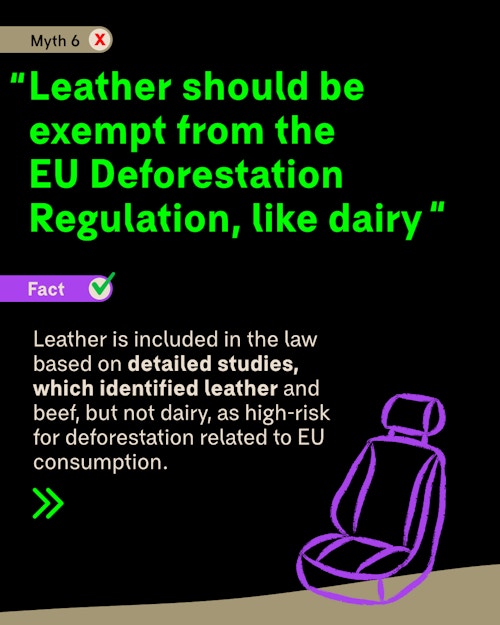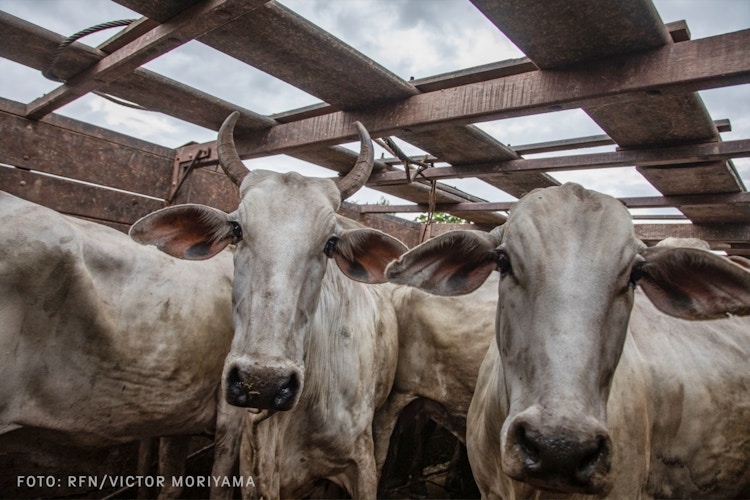Mythbusting the leather industry's EUDR claims
The leather industry is campaigning to exclude leather from the EU Deforestation Regulations (EUDR). Rainforest Foundation Norway and allies expose the truth behind the leather industry's claims and why leather should remain in the EUDR.

HIDES: Packing hides at a Brazilian tannery. Photo: RFN/Victor Moriyama
By Rainforest Foundation Norway.
Rainforest Foundation Norway and our allied NGOs have prepared a document to challenge six false claims made by the industry and present evidence to support leather’s continued inclusion in the law.
What is the EUDR?
The EU Deforestation Regulation (EUDR) stipulates that the seven commodities timber, cattle, soy, palm oil, coffee, cocoa, and rubber, and specific products derived from them, cannot be placed on the EU market or exported from the EU unless they are deforestation-free, produced legally and accompanied by a due diligence statement.
Mythbusting the leather industry's false claims:









Myth 1: Leather is not directly linked to deforestation.
Truth: Cattle ranching is the leading driver of global tropical deforestation, particularly in the Brazilian Amazon. Bovine cattle are reared for both meat and leather, with the EU the second largest market for Brazilian leather. Multiple investigations have linked European leather to cattle ranching causing deforestation.

Photo: RFN/Victor Moriyama
Myth 2: Academic research has concluded that leather is not a driver of deforestation.
Truth: The main study cited by the leather lobby as evidence that leather is not a driver of deforestation is a flawed, industry-commissioned report. Other peer-reviewed academic studies have drawn a clear link between leather and deforestation.

Photo: RFN/Victor Moriyama
Myth 3: Leather is a waste product from meat production.
Truth: Leather is a highly lucrative commodity. Europe imports €1.3 billion worth of bovine leather and hides annually, and European leather processing generates €125 billion in turnover. With so much value added downstream, the leather industry clearly has the capacity to ensure the raw materials it depends upon are deforestation-free.

Myth 4 : The demand for leather has no influence on the supply of cattle hides.
Truth: When margins are tight, the revenue from hides can determine whether a slaughterhouse makes a profit or a loss. Brazilian leather exports generated US$1.26 billion in revenue in 2024, supporting the continued operation and expansion of the cattle industry.

Photo: RFN/Victor Moriyama
Myth 5: Non-EU supply chains will not set up costly cattle traceability systems just for a residue of meat production.
Truth: The EUDR is already incentivising producers in Brazil to invest in traceability to support continued exports of beef and leather, with multiple schemes in development or operation.

Myth 6: Leather hides should be excluded from the EUDR because other cattle products (including dairy and collagen) are excluded.
Truth: The feasibility study informing development of the EUDR prioritised commodities based on trade volumes, past and projected deforestation rates in the countries of origin and the EU share of global demand. Beef and leather were identified as priorities – dairy and collagen were not.

Photo: RFN/Victor Moriyama
The bottom line: Leather IS a driver of deforestation
To protect rainforests, regulations must recognise leather's role in driving deforestation.
Contacts:

Solveig Firing Lunde
Senior European Policy and Alliances Adviser, Deforestation free-Markets
(+47) 411 07 023
solveig@rainforest.no

José de Melo
Senior Supply Chain Adviser Cattle, Deforestation-free Markets
(+47) 406 15 292
jose@rainforest.no
